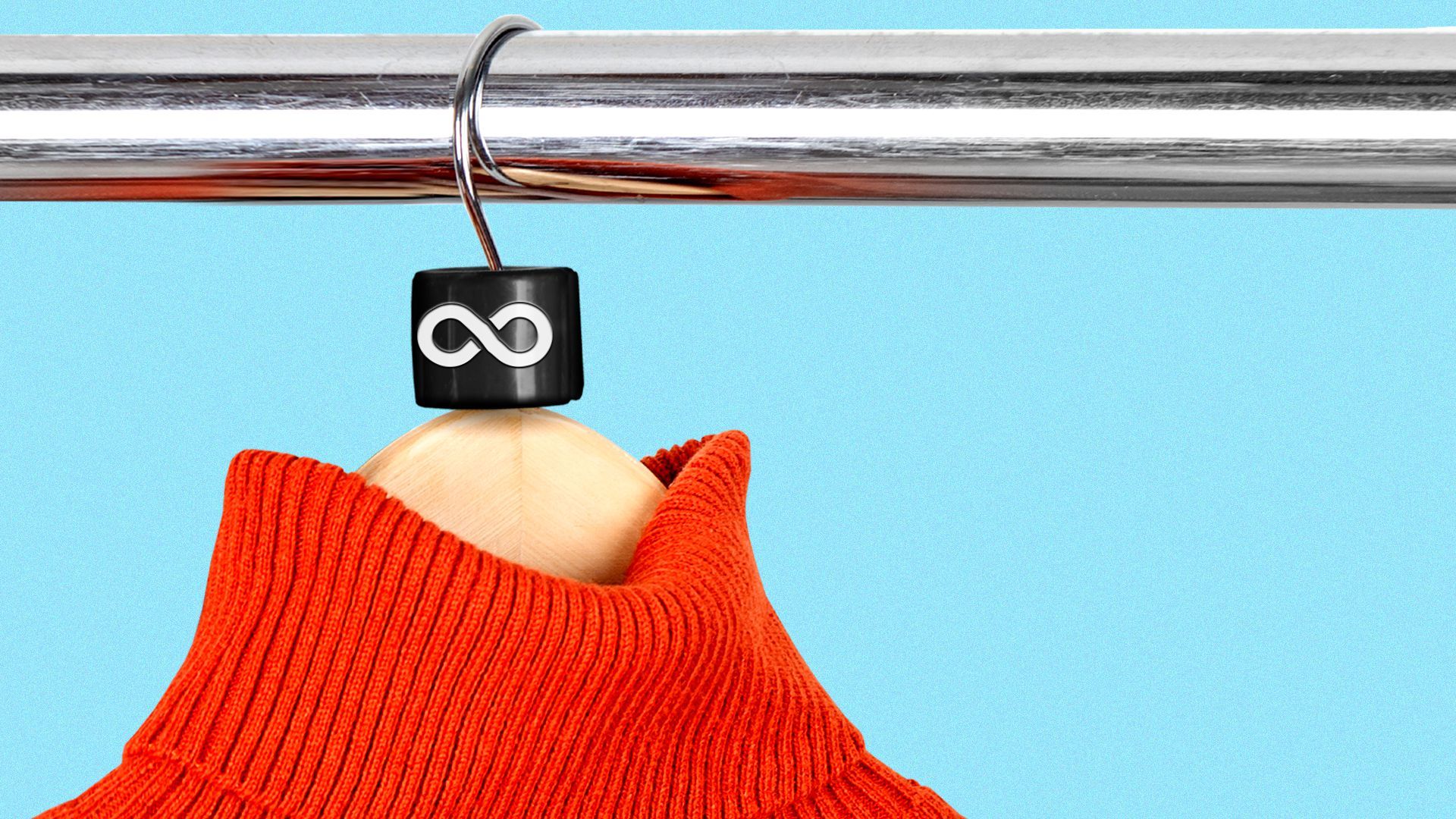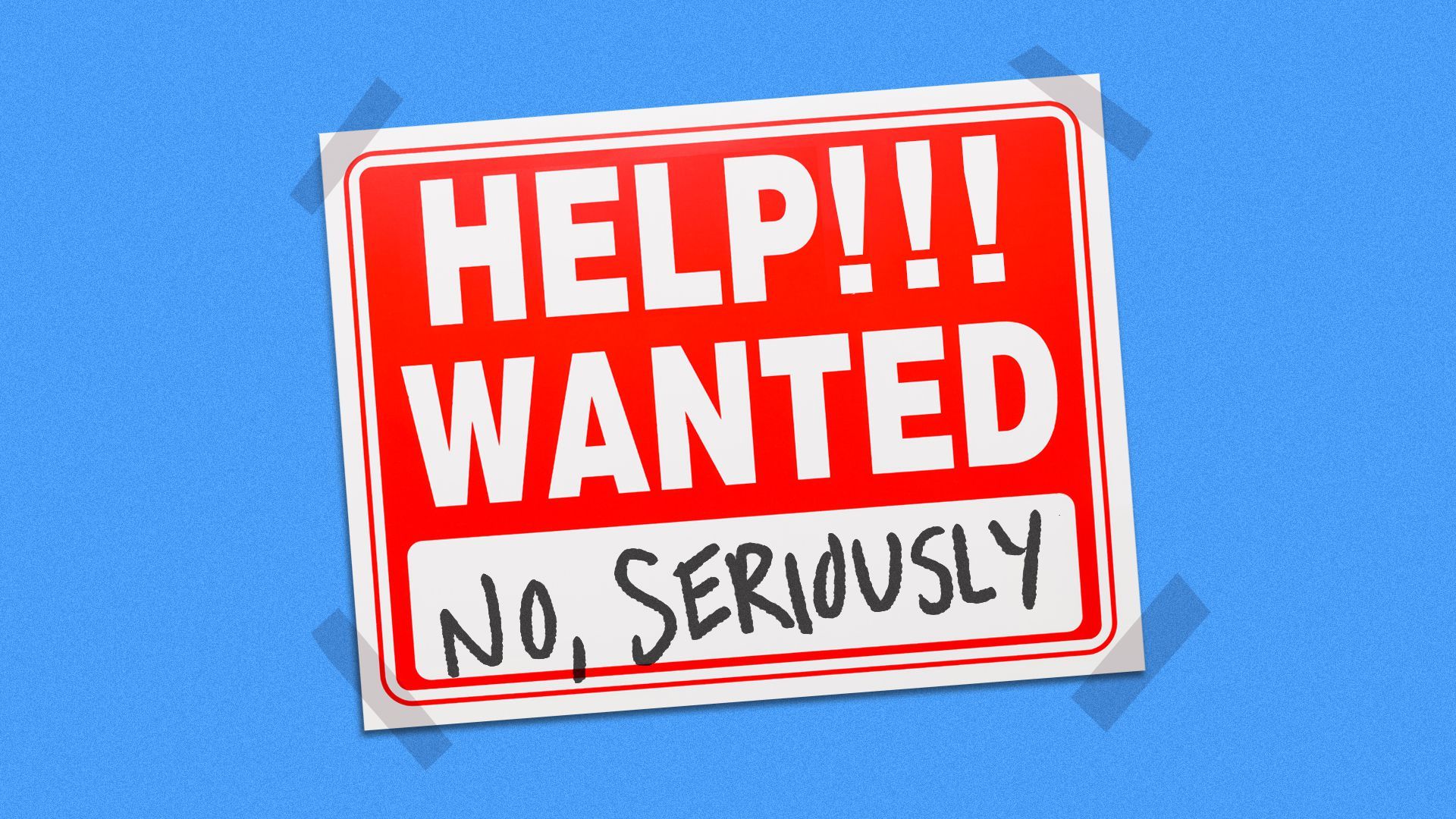| Inclusive sizing is one of the biggest trends in retail, leaving fashion brands scrambling to extend women's clothing lines well beyond the traditional offerings, Jennifer A. Kingson reports. - The brass ring is to offer sizes 00-40 — not just "plus" sizes 16-26 — in everything from jeans and lingerie to formalwear.
Why it matters: As the average American woman has become larger — and younger women embrace body positivity and show off their curves on TikTok — the term "plus size" and its negative connotations are rapidly being banished. - The average U.S. woman wears a size 16 or 18, according to a 2016 study still considered the industry benchmark.
- But 42% of American adults "gained more weight than they intended" during the pandemic, according to a survey by the American Psychological Association and the Harris Poll — and now they're shopping for larger sizes.
Driving the news: Major retailers like Nordstrom, Target, Kohl's and Anthropologie have introduced inclusive sizing options in a steady march over the last three years. - They're competing with brands formed specifically to serve this market, such as Universal Standard, Rihanna's Savage X Fenty lingerie and Yitty (Lizzo's shapewear collaboration with Fabletics).
- They're trying to get the fit right for larger bodies, with new designs that don't just scale up patterns used for the average size 8.
- And they're being goaded by younger consumers who demand the latest fashions in larger sizes and worship social media stars who wear them, like Remi Bader.
Long relegated to stretchy "athleisure" clothing, inclusive sizing is now "a big driver in intimates," says Juliana Prather, chief marketing officer at Edited, a retail data analytics company. "It's becoming something to talk about in luxury." - "If you're J. Crew, The Gap, a large retailer, you've got to figure out what to do, what steps you're going to take," Prather says.
By the numbers: The market for larger-sized women's apparel is growing faster than the total women's clothing market — and gaining share, according to a Coresight Research report. - Sales were $34.3 billion in 2021 — up 21.2% from 2020 — and expected to grow 7.6% this year.
Yes, but: It's been difficult to profitably serve the extended-size market, in part because it's tricky to manage inventory in so many sizes and styles. - Old Navy made a splashy debut of inclusive sizing last year in a campaign called "Bodequality" — only to see it backfire.
- Larger clothes are more expensive to manufacture, and when retailers pass the cost on to consumers, they're accused of levying a "fat tax."
The other side: Menswear is a laggard in inclusive sizing — not because men aren't getting bigger, but perhaps because they shop less, or because sales of men's plus-size fashions have declined. What's next: Experts predict that more womenswear and menswear brands will learn how to get inclusive sizing right — and will add adaptive apparel, for people with disabilities and the elderly, and gender-neutral clothing. Share this story. | 








No comments:
Post a Comment